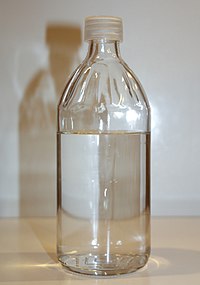
Photo from wikipedia
Polypyrrole (PPy) and copper sulfide (CuS) have been successfully deposited on bacterial cellulose (BC) membranes to prepare nanofibrous composite electrodes of PPy/CuS/BC for flexible supercapacitor applications. The introduction of CuS… Click to show full abstract
Polypyrrole (PPy) and copper sulfide (CuS) have been successfully deposited on bacterial cellulose (BC) membranes to prepare nanofibrous composite electrodes of PPy/CuS/BC for flexible supercapacitor applications. The introduction of CuS remarkably improves the specific capacitance and cycling stability of BC-based electrodes. The specific capacitance of the supercapacitors based on the PPy/CuS/BC electrodes can reach to about 580Fg-1 at a current density of 0.8mAcm-2 and can retain about 73% of their initial value after 300 cycles, while the PPy/BC-based device could retain only 21.7% after 300 cycles. This work provides a promising approach to fabricate cost-effective and flexible nanofibrous composite membranes for high-performance supercapacitor electrodes.
Journal Title: Carbohydrate polymers
Year Published: 2017
Link to full text (if available)
Share on Social Media: Sign Up to like & get
recommendations!